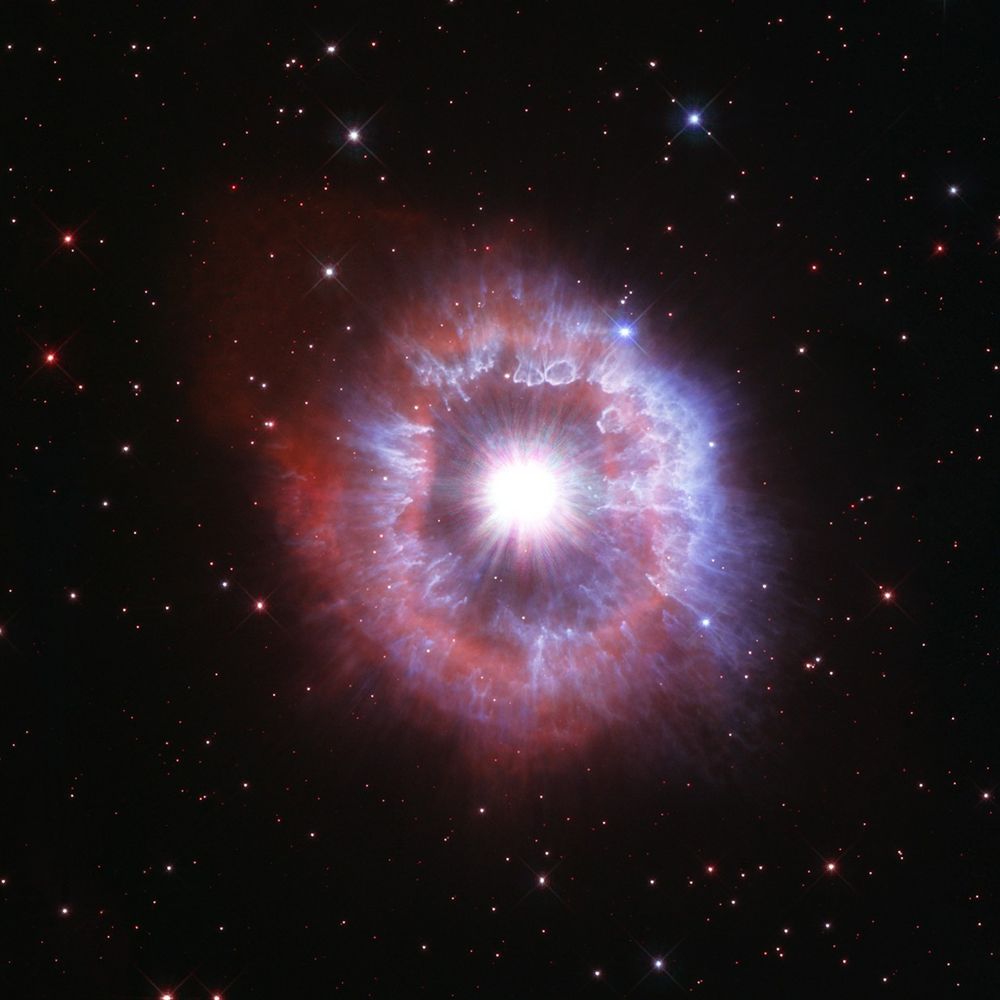D.U. astronomie-astrophysique - DEUG Biologie
https://kenaroh.blogspot.com/
This composite image includes Hubble data. Credit: NASA/CXC/JPL/ESA/STScI/ESO. #Astronomy

This composite image includes Hubble data. Credit: NASA/CXC/JPL/ESA/STScI/ESO. #Astronomy
This new #HubbleFriday view shows the skewed galaxy Arp 184, which belongs to the Atlas of Peculiar Galaxies.
Arp 184 earned its spot due to its broad, asymmetrical, star-speckled spiral arm: go.nasa.gov/4jZDB2j
#Hubble #Astronomy

This new #HubbleFriday view shows the skewed galaxy Arp 184, which belongs to the Atlas of Peculiar Galaxies.
Arp 184 earned its spot due to its broad, asymmetrical, star-speckled spiral arm: go.nasa.gov/4jZDB2j
#Hubble #Astronomy
A notable bar structure slices across the center of the galaxy, which channels gas inwards toward the galactic core, fueling star formation. #Hubble #Astronomy

A notable bar structure slices across the center of the galaxy, which channels gas inwards toward the galactic core, fueling star formation. #Hubble #Astronomy
From Hubble's 24th year, this image shows the globular cluster M15.
This spectacular swarm of stars is one of the densest globular clusters ever discovered and calls the Pegasus constellation home: go.nasa.gov/4j4Yx7Q
#Astronomy

From Hubble's 24th year, this image shows the globular cluster M15.
This spectacular swarm of stars is one of the densest globular clusters ever discovered and calls the Pegasus constellation home: go.nasa.gov/4j4Yx7Q
#Astronomy






NGC 1514, also known as the Crystal Ball Nebula, is a planetary nebula in the zodiac constellation of Taurus.
Credits:
M. Hakan Özsaraç Science NASA, ESA, CSA, STScI
#Astronomy

NGC 1514, also known as the Crystal Ball Nebula, is a planetary nebula in the zodiac constellation of Taurus.
Credits:
M. Hakan Özsaraç Science NASA, ESA, CSA, STScI
#Astronomy





Credit: NASA, ESA, Hubble Heritage Team
#Astronomy

Credit: NASA, ESA, Hubble Heritage Team
#Astronomy





#Astronomy

#Astronomy
#Astronomy

#Astronomy
of the massive star cluster NGC 346 (left) versus a Webb image of the same cluster (right). While the Hubble image shows more nebulosity, the Webb image pierces through those clouds to reveal more of the cluster's structure.
#Astronomy

of the massive star cluster NGC 346 (left) versus a Webb image of the same cluster (right). While the Hubble image shows more nebulosity, the Webb image pierces through those clouds to reveal more of the cluster's structure.
#Astronomy


